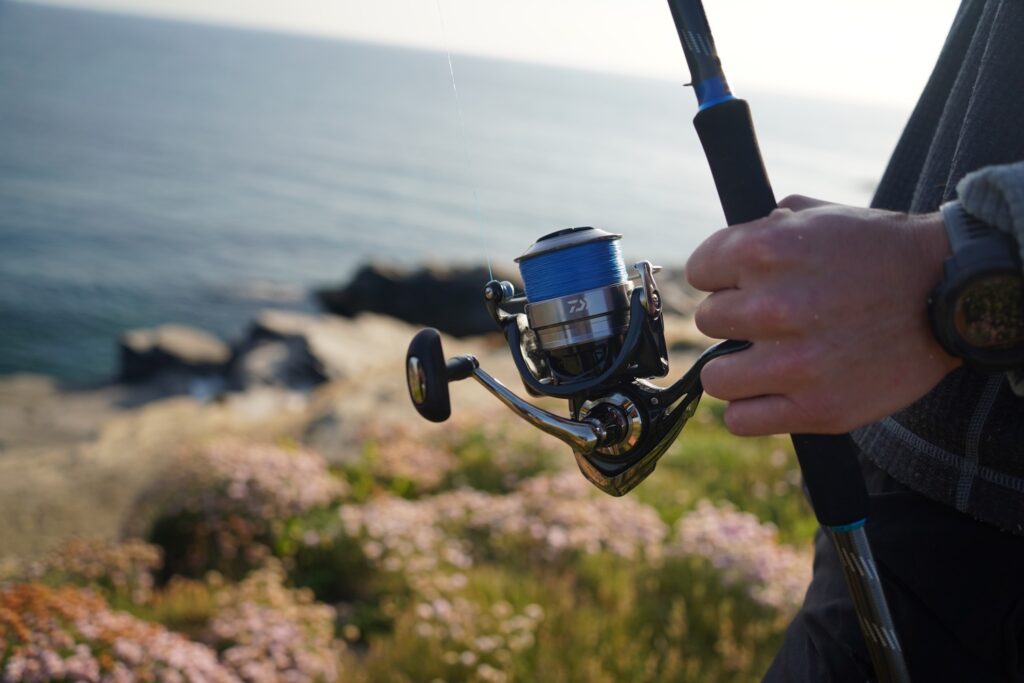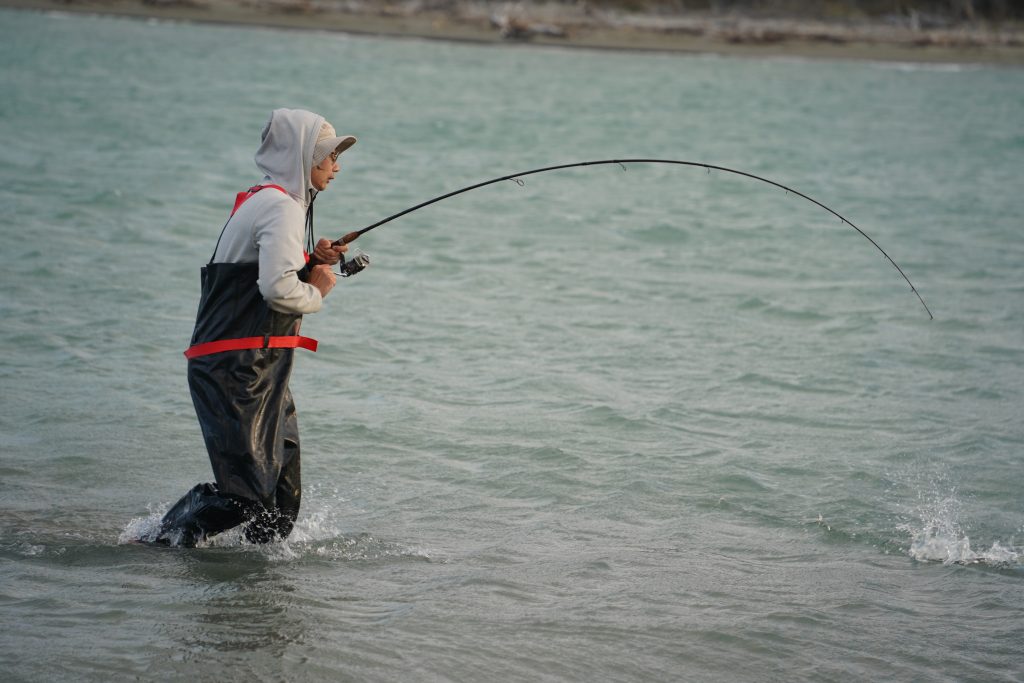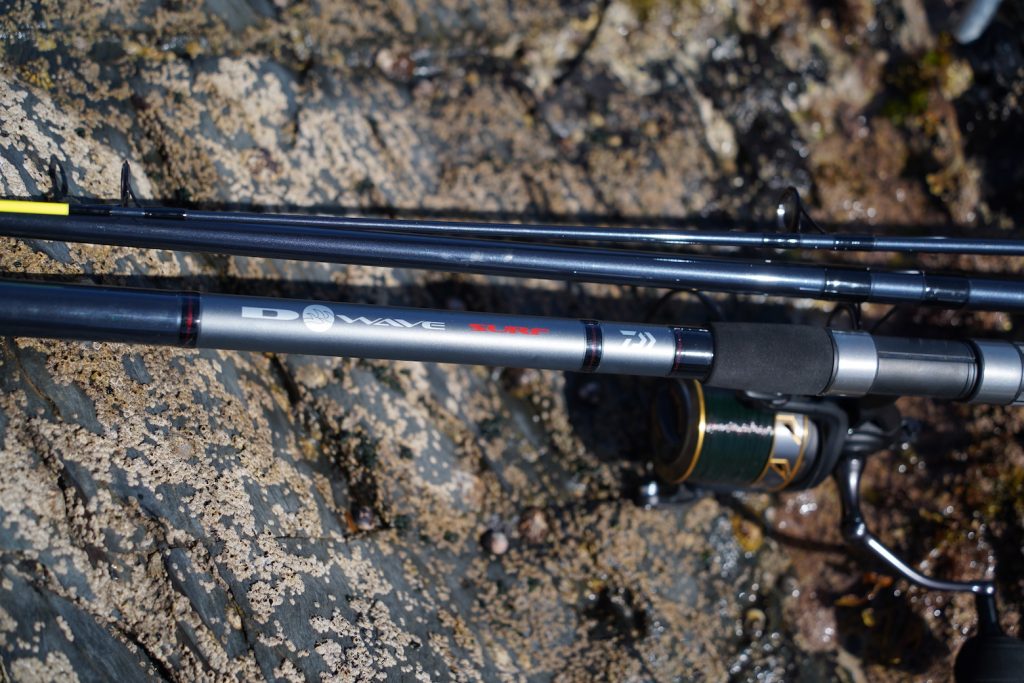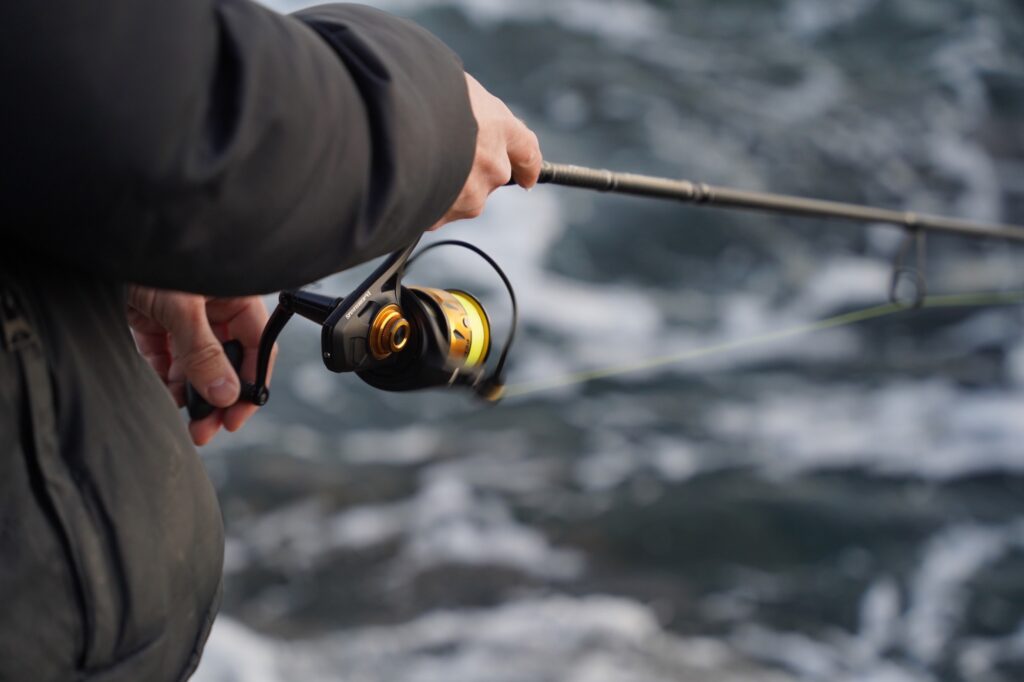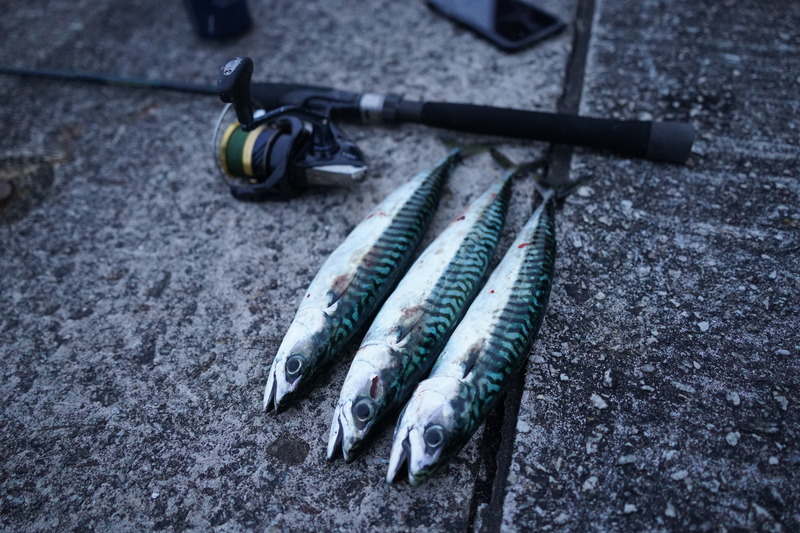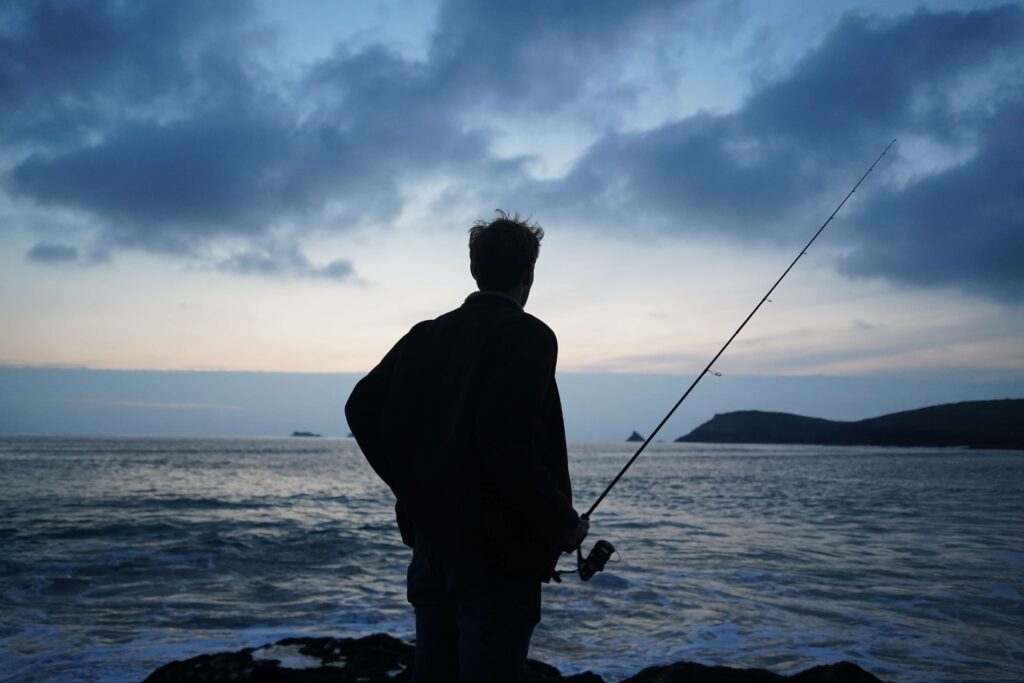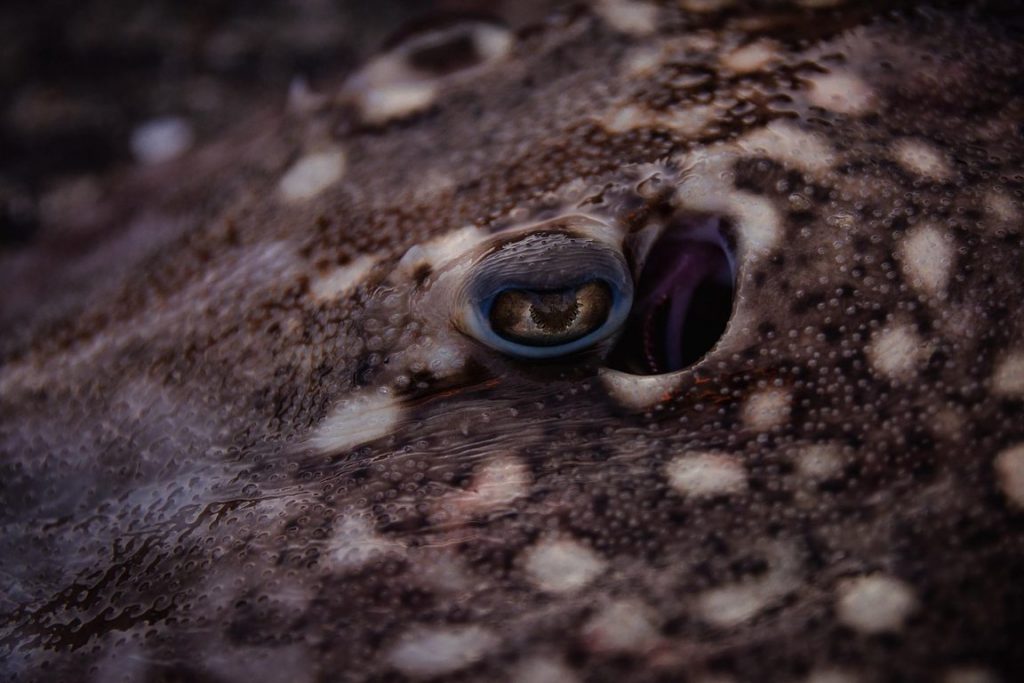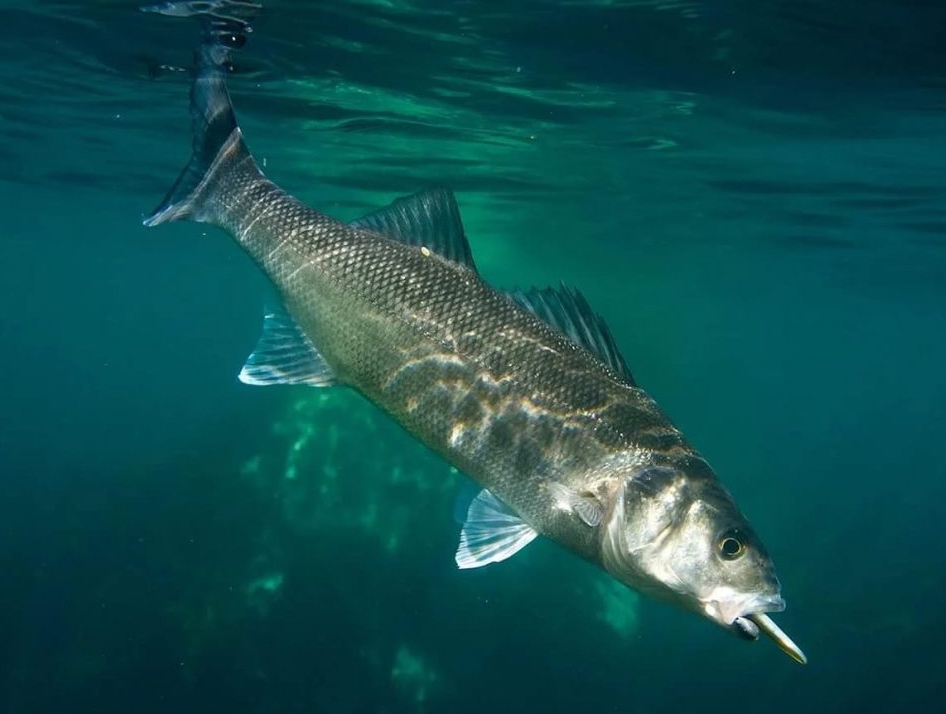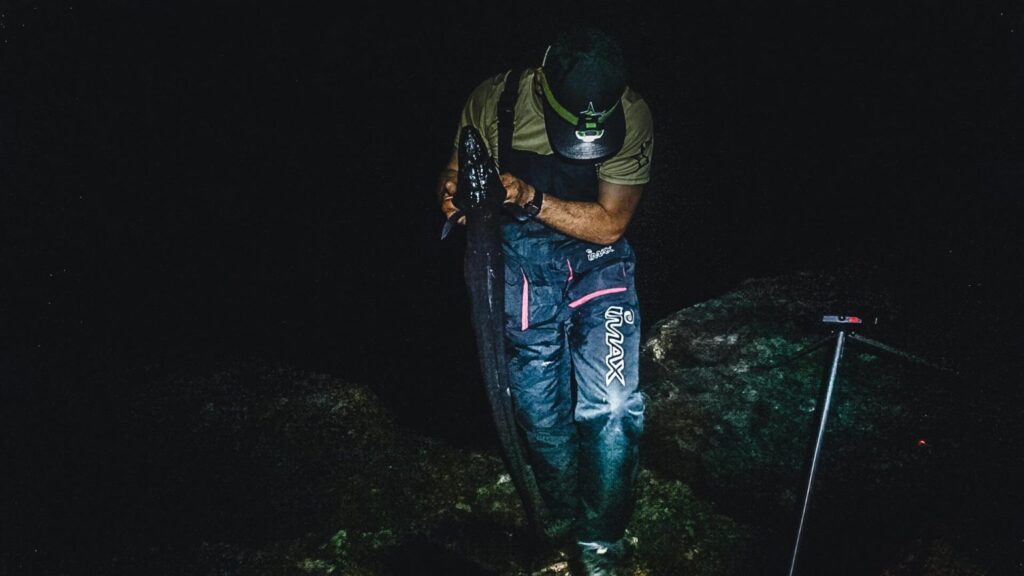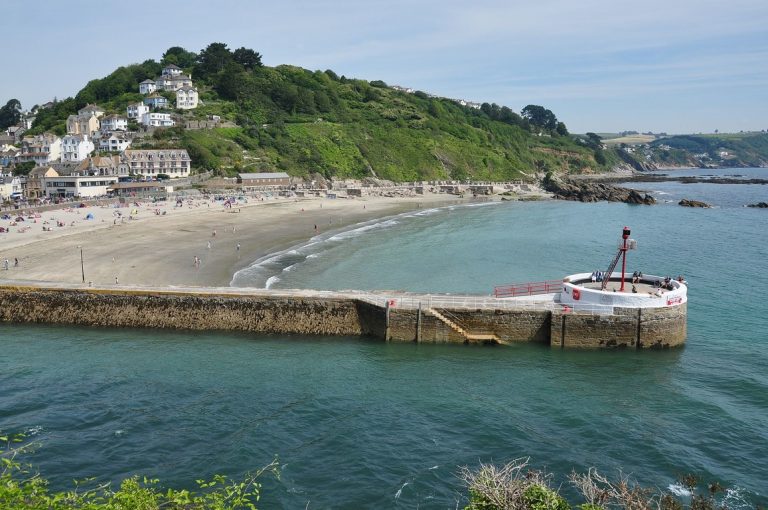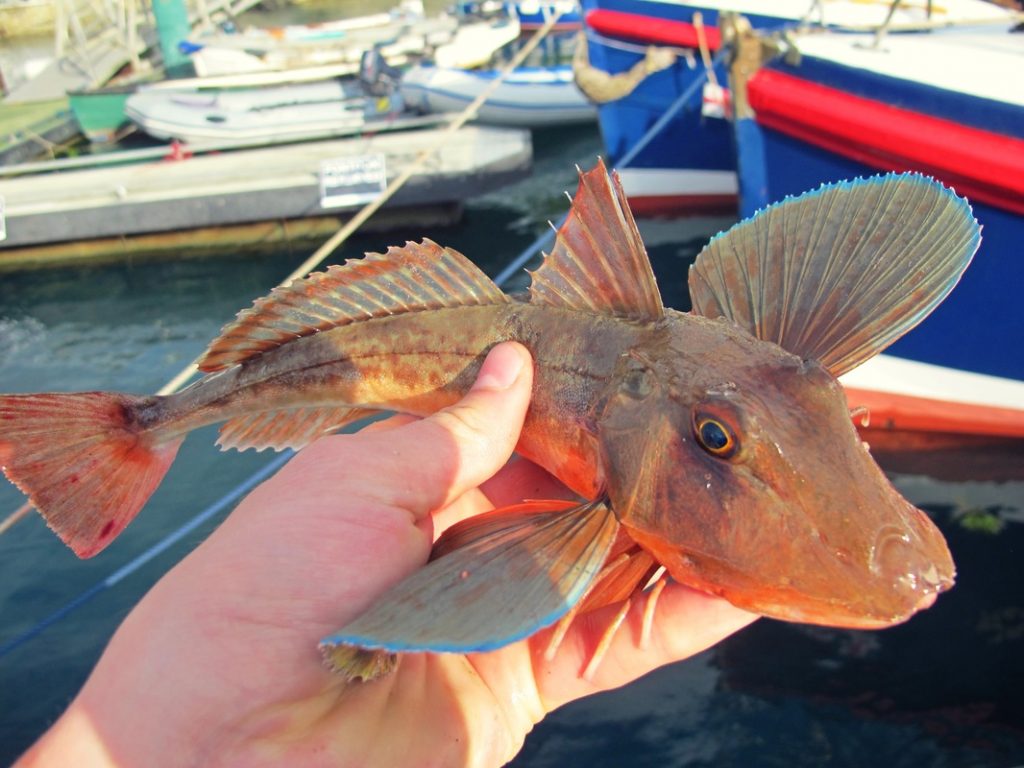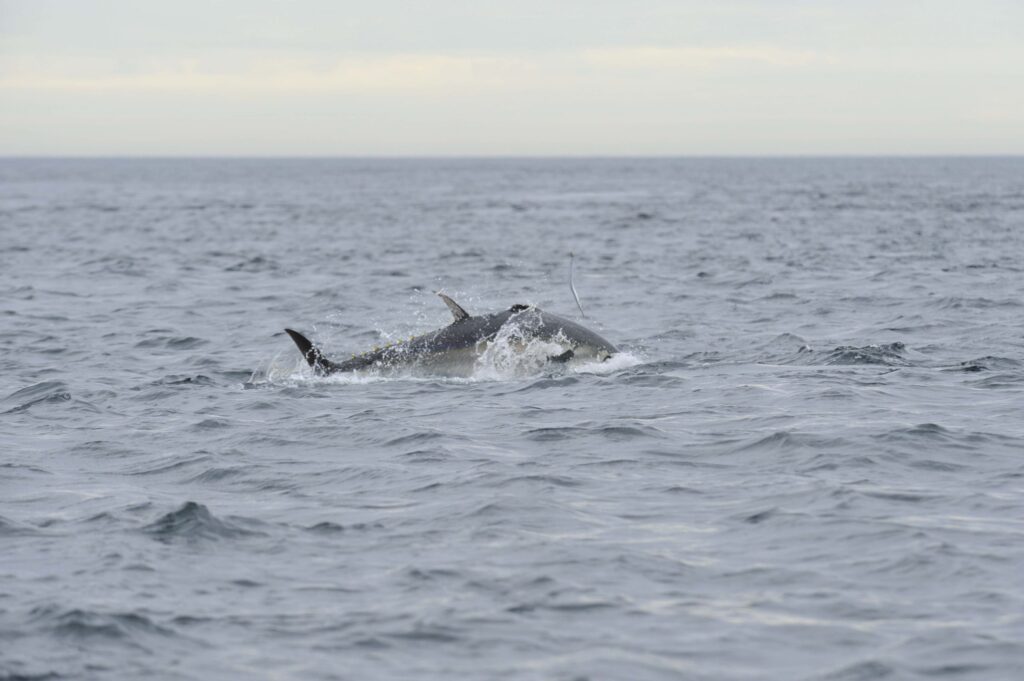Fishing in Mevagissey
Fishing on Mevagissey harbour wall is excellent from both the lighthouse harbour and from the left-hand side. By the lighthouse, mackerel shoot past in massive shoals in late springtime. Pollack and wrasse cruise around the kelp and a myriad of mini species surprise anglers with their occasional presence. On a stormy evening, squid come in and wreak havoc on the local bait fish. Fishing from Mevagissey is an experience so enjoyable it etches itself into your mind, and a lot of people must have nostalgic memories of childhood fishing trips in Mevagissey. If you are planning on fishing Mevagissey for the first time and are visiting between April – September, you should read FISHMAG’s tips for mackerel fishing and the best mackerel rods before you visit so you can make the most of your trip.
Note that information on this page is based on fishing trips in the area pre-2020, so it may not be completely accurate.
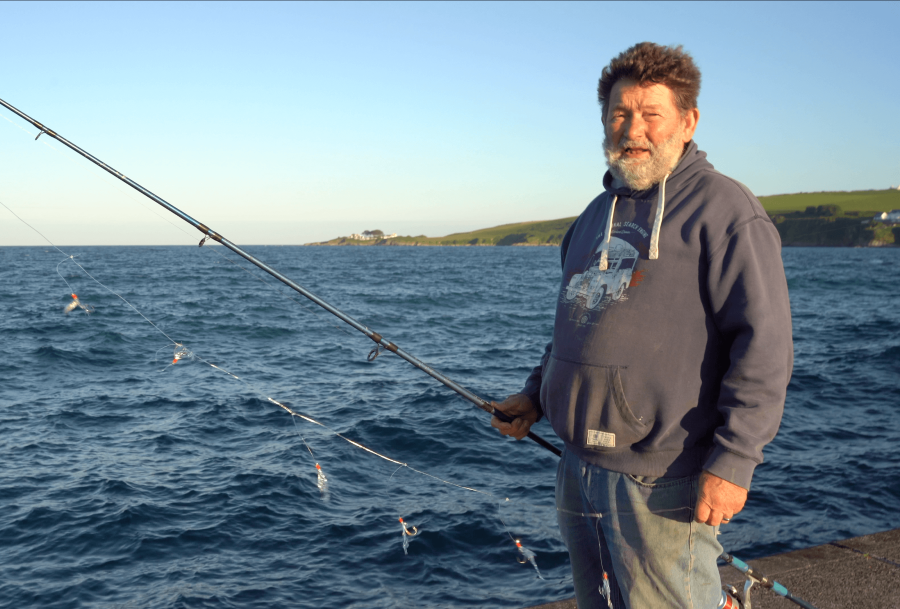
Mackerel Method
Mevagissey is best for mackerel fishing and your best bet is either using a simple float rig or a string of mackerel feathers. Rather than using ordinary mackerel feathers, try using Sabiki’s which have smaller hooks. These result in more hookups and less damage to fish you don’t want to keep. However, it’s worth knowing that all mackerel you touch are going to die due to damage to their skin, so you shouldn’t return mackerel. Once you’ve caught enough, stop fishing for them or start giving them to neighbours etc. The most humane way to kill a mackerel is to place your thumb inside its mouth and bend the neck backwards to instantly break its neck. Hitting over the head works but is more difficult. Read the full mackerel guide.
Bass Method
Bass fishing in Cornwall is excellent both from the North and South Coasts. Bass are brutal bullies in shining camouflage, hidden against the glimmer of the water’s surface. If I wrote about local bass spots I’d probably be assassinated. Mevagissey harbour itself is not a particularly good bass spot, but the surrounding coastline holds spots with more promise. I’ve written a guide on bass lures here.
Seasons & Timing
Mevagissey is best fished at high tide, especially spring high tides. Check to see if there’s a day when you visit when dusk and dawn coincide with a high tide, that’s when there’s often the most action. Mackerel are very dependent on sight for hunting, unlike many other species. At night time, you’ll snag yourself some dogfish, too.
Summer
The sea is buzzing with life. There are lots of species both lingering around the harbour and pelagic species moving through in shoals. During this time, directly down the harbour wall, there will be Wrasse and a good range of quirky smaller species. A little further out pollack, garfish, mackerel and a few bass will be looking for a meal. On the harbour, there are people using mackerel feathers near the lighthouse, and along the wall, a few people are fishing with floats.
Autumn
Things take a long time to slow down from the aquatic buzz in summer. I consider early November to be closer to summer than winter fishing but expect a slowdown. The pollack are fat after a summer of feeding and are more plentiful, too. Try fishing at night on the bottom…
Winter
Read my guide on Fishing in Fowey instead and head over there from dusk onwards. You’ll have more luck there, although you’ll probably catch a trusty dogfish from Meva at least and it’s still an ‘ok’ place to fish. Wherever you fish locally in winter, your best bet is fishing on the bottom and preferably after dark. Mevagissey does churn out some Squid in winter, mind.
Spring
The mackerel appear in large shoals in a big shapeshifting mass. Unlike summertime mackerel, these fish are more consistently large and meaty. Plucked straight from the freezing water they are the best food man can get – prove me wrong! If there’s a spring high tide that coincides with dusk and it’s late April to late June, your odds are very good indeed. For other species, it’s hard to say what will be there this year. In 2012 there were tons of garfish for instance, in numbers I haven’t seen since.
Species & Ground
The type of ground you’re fishing over will determine the kinds of fish you’re likely to catch and the likelihood of you losing your tackle to snags. The outer harbour has fairly deep water of several meters, with rocky areas covered in kelp and seaweed as well as much larger areas with a clean sandy bottom. You can normally tell at low or mid-water where the rougher ground is because the water in those areas is darker. Along the main stretch of the outer harbour, half the ground is rough and the other half is a clean sandy bottom. The clean ground is that which is closer to the lighthouse along the main long stretch.
Mackerel
For mackerel, the best area is usually the area around the point near the lighthouse. When mackerel come in large shoals, you’ll catch them everywhere along the outer wall, except perhaps down the end towards the cliff where the water is shallower and rocky. Read the full mackerel guide.
Wrasse & Pollack
Wrasse are best targeted towards the cliff on both sides of the harbour, it’s advised you fish for these either with a float rig to prevent getting caught in the weed or with modern weedless soft plastics on lure gear. You may have seen weedless hooks before that let you fish over rough ground without getting snags. I’d recommend them. They’re especially useful when the fishing is quiet as there’s almost always a nice Pollack or Wrasse lurking in the weeds where few people are willing to fish for fear of losing tackle. Read the full guide to Wrasse fishing here.
Pollack
For Pollack, the opposite is true, you’ll be better off fishing over more seaweedy ground or better yet from the left wing of the harbour where it’s almost entirely shallow seaweedy ground (the side without the lighthouse). Mevagissey has large numbers of smaller pollack, but it’s not nearly as good as more rocky areas, so consider moving along the coast for rougher ground.
Flatfish
Flatfish are best targeted inside the harbour itself, rather than outside it, especially in the area around the inner harbour wall. Although these are awkward and busy places to fish and there are lots of ropes you could snag on and boats to watch out for, so give this a miss unless you’re fishing with very light tackle and are experienced. Read the full guide to lure fishing for flatfish here.
Alternative Species
For a whole heap of fun, especially with young children, target mystery mini species and wrasse directly down the side of the harbour wall with a ragworm on a size 8 hook right on the bottom. You will almost certainly catch fish using this method, though it’s highly unlikely they’ll be edible so remember to return them and take care of them as best you can. By far most of the fish around Mevagissey are small and quirky species rarely targeted by anglers, and they tend to lurk in the cracks and rocks on the bottom of the harbour. These tend to be easy to catch with the right methods, but it does involve fishing in a way few others realise is possible.
Recommended Fishing Methods
Wrasse+ Method
Down the harbour wall you’ll find species you might not have known existed. Use rag worm or a rag worm imitation like Marukyu Isome and a small size 8 hook – no bigger. You only need a little weight to get the bait down and then you simply hold it there with a tight line and wait for bites, which typically come quickly. It’s very important you use a small hook. This style of fishing is great fun, especially with kids as you catch a wider variety of species and they tend to always be present. Be sure to take care of the fish and return them as they are unlikely to be edible (I’ve tried eating Wrasse and they are utterly disgusting and nothing can make their flaky soggy flesh taste good).
Tips & Tricks
Mackerel by the Lighthouse
The best area is usually the area around the point near the lighthouse. When mackerel come in large shoals, you’ll catch them everywhere along the outer wall, except perhaps down the end towards the cliff where the water is shallower and rocky. If mackerel are returned to the water, they always die due to damage to their sensitive skin, so catch and release will not work for this species.
Are Your Hooks Too Big?
Even the hooks on mackerel feathers, which are typically size 1o are a bit on the large size in the eyes of most saltwater competition anglers I know. It’s not true that bigger fish won’t take smaller hooks. That’s why I tend to use ‘Sabiki’s’ (buy them on Amazon here). Sabiki’s are just like normal mackerel feathers, but with slightly smaller hooks, which allows for more hookups and more fish.
Fishing at Dawn & Dusk
You can watch the fishing boats leave the harbour and come back in as the sun melts below the horizon, or just begins to light up the clouds. When the sky is pinky red and orange it’s just glorious. These times are also often the best for fishing, especially for fish like bass, but really for pretty much everything (except Wrasse).
Go Wreck Fishing
Mevagissey has some of the best deep sea wreck fishing in the South West. If swimmers could see the blue sharks and other big species offshore they might think twice about dipping a toe. A common myth is that the UK doesn’t have sharks. As you know, the UK has many shark species, they’re just mostly in very deep water offshore. Hop aboard one of Mevagissey’s fine fishing vessels and get out there where the action is. Mackerel in the millions shoot around in a summer-time frenzy. Seabirds kamikaze dive into bait balls the size of your house. Fat pollack lurk around the rusted ribs of shipwrecks offshore. Eels that could swallow your leg slide through the old ship’s innards. By the end of a boat trip from Mevagissey, you’ll need to buy a bigger freezer.
Try Float Fishing 10 Yards Out
Often anglers cast out as far as they can, holding onto the belief that the fish are always further out there somewhere. In fact, many fish species love structure and rough ground, and often that’s not far from your feet! Mix things up and try fishing at different ranges, including in the 3-7m range. If you’re using lures, you might as well get a larger coverage of the area by casting further, but with a float, it’s not necessary. Garfish like being near the harbour because they eat scraps that humans drop in, pollack and wrasse like the kelp around the bottom of the wall. It feels good to cast a long way but it’s rarely helpful.
Fish At High Tide
Locals almost exclusively fish at high tide. I personally fish at Mevagissey mostly on spring tides during the evenings. While fishing is always unpredictable, especially in the sea (which is what makes it fun), I’d estimate your odds of catching as being 5x higher when the water is high at Mevagissey. Having said this, if you are fishing at low tide, try fishing directly down the side of the harbour wall, as species like Wrasse and Pollack will still lurk around these areas even when the tides out. If it’s early summertime, there may be mackerel, but if you’re catching them there at low tide, there are probably lots more at high tide.
On a final note, there’s a tackle shop in Mevagissey you can’t miss on the right-hand side of the road towards the lighthouse harbour. It’s a small tackle shop and may not sell rag or lug, so consider visiting Lowen Shy Art & Angling in St Austell for a slightly more comprehensive range of baits. For inspiration to seek out new spots, it’s handy to have a physical book on Cornish sea fishing.
The Ideal Beginner’s Lure Fishing Set-Up
The best bass rods | Finding your next stick
Sea fishing starter kit | beginners set up
Sea Fishing in Cornwall
Mackerel Fishing UK | How to catch mackerel in 22 tips
Lure fishing for bass in the UK | 30 tips
Fishing in St Ives
Fishing in Padstow
Fishing in Newquay
Fishing in Looe
Fishing in Fowey
A locals guide to fishing in Falmouth


